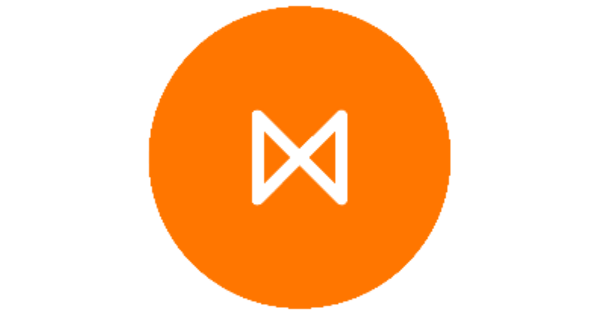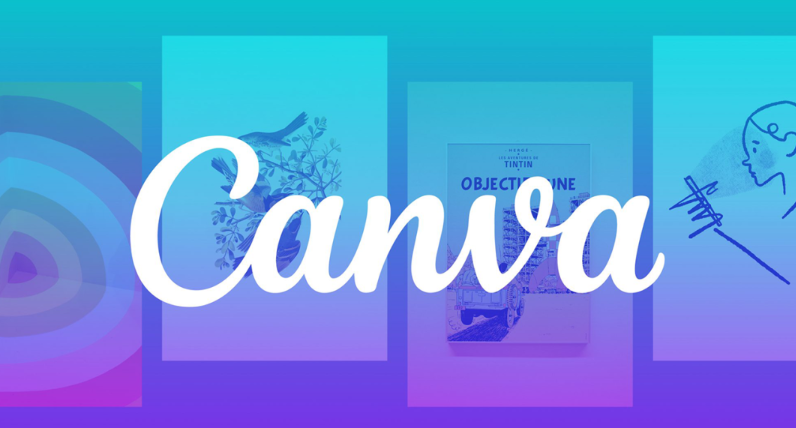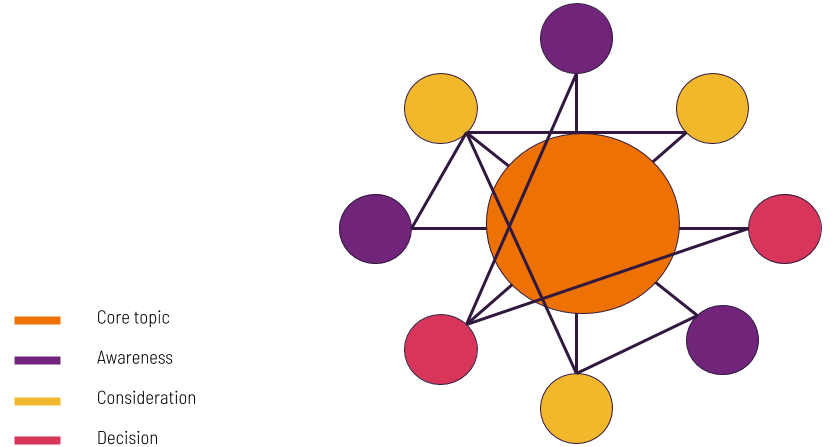Liz also touches on lessons from working with Canva Co-Founder Melanie Perkins, including why being authentic and having a big vision is so important for your company.
Liz drops some awesome advice and this episode is a must-listen for any business owner looking to start their first PR campaign.
So please enjoy this conversation with Liz Mckenzie.
Table of Contents
ToggleWhat you will learn in this episode

- How to know when your business needs PR
- How to create your brand’s story
- Lessons from working with Melanie Perkins
- How mentors can help your business
- The Art of Receiving Negative Feedback (without feeling dead inside)
- How to influence your customers to take action
- Word of mouth marketing
- The 2 things that every PR campaign should have
- How to connect with journalists
- How to create your 3 key messages for your business
Resources mentioned in this episode
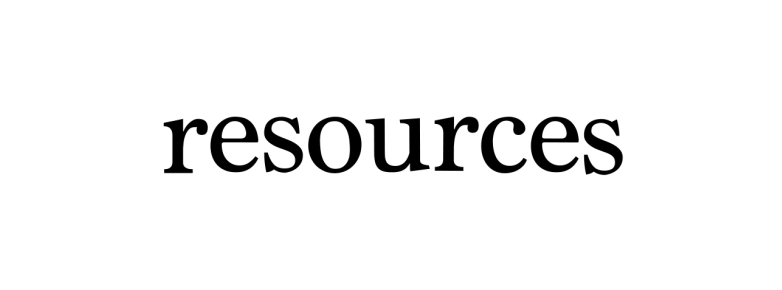
How I Built this podcast episode with Melanie Perkins [must listen]
Find relevant reporters on Twitter
Book Recommendation
The Subtle Art of Not Giving a F*ck by Mark Manson
What business would you build on Mars?
Reverse Tourism. Get the Martians to go and visit earth!
Get in touch with Liz
Transcript
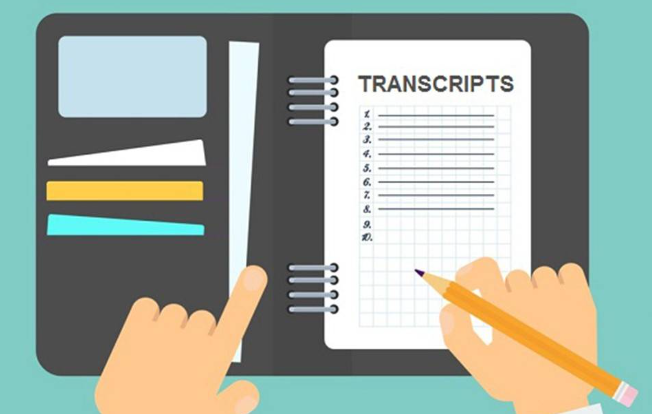
Brendan: Liz, welcome to the show.
Liz: Thank you for having me.
Brendan: You’re currently working at Canva?
Liz: Yes.
Brendan: Can you tell us the story of how you first got into communications and marketing?
When I was younger I was approached by a family friend who actually had her own PR agency and she needed help with that, so I was given a very good opportunity to work on some really big accounts. And at that time I was in Hong Kong working on some organization called the Society of Publishers in Asia. And being so young, super fresh in the game, I was already working with editors from Time Magazine, The Economist, Newsweek, Wall Street Journal, and before you know it I just got my relationships going and I kept going on.
Brendan: When did you come to the realization that you had the skill to make people take action?
Liz: I think it all goes back to, going back to the messaging that you want to put out there. I think that’s one of the most important things before you kick off any PR campaign or any comms campaign. You understand the objective, whether or not is to increase sales, encourage someone to go on a website to download an app. But how do you get them to do that really comes in the form of the story, or how do you want a person to feel?
For example, with Canva, what we try to do is to educate people that you can actually create amazing designs. And these designs are just about making things look pretty, they’re actually about helping them achieve their goals, whatever that may be. A business person might need to create a beautiful pitch deck. A nonprofit might need to create some really beautiful marketing material to fundraise, or a startup might need to create some marketing material on social. It’s all about that goal that they want to achieve. And for me, it’s around how do we communicate that message to those people to take that action to do what we need them to do.
Brendan: Interesting. For any early-stage businesses listening and they’ve defined their objective, but they’re struggling with this story, what next steps do they take?
Liz: I think what works really well, and from my experience what I’ve seen a lot is you have to come from the heart and oftentimes I would actually ask a person to tell me their story. What motivated them to start that idea? Did they see something? Did they feel? Did they actually have that issue themselves? Did they have a challenge that they wanted to solve? And I think once you’ve got that motivation behind you, you’d then be able to articulate that into a different messaging for your audience. Always goes back to why? Why do you need this product, this service?
Brendan: I guess Canva is a really good example of that with, Melanie Perkins. Very frustrated with Photoshop and the Adobe Suite, wanted to democratize design. I mean, how does she convey such an authentic message? We’ve all seen her… she doesn’t do too much media, but when she does, she nails it. She comes across super passionate, she always says that she’s only 1% done in her mission. How can business owners tap into some of these lessons that Melanie, is putting out there?
Liz: Melanie, has a very, very strong vision. And everywhere you go, wherever you are and hear her talk or hear her speak, she can always tell you that her mission is about empowering everyone, everyone to design. And when we say everyone we mean a person with different backgrounds, or languages, different locations, different educational backgrounds.
And what she really wants to do is to tell that story of giving people the opportunity to achieve their dreams and their mission. I think you just see it because she really believes in that and she’s just one of the most authentic, genuine people I’ve ever met. And you can just see it if you have the chance to meet her.
Brendan: Yeah. Speaking of mentors as well, so obviously it’s important to have mentors in your business journey. How do you use your access to such amazing people at Canva? I mean, how do you learn from these mentors and how can everyday businesses find mentors?
Liz: We have an amazing program at Canva. Basically, we have two in-house coaches in Sydney alone where they actually train you or help you with your software skills. Some of my favorite things are around calm and confident. It’s sort of how to give feedback properly and all of that. But what we also have is sort of a buddy mentor system. And what this is, is that that person will actually help guide you when it comes to removing roadblocks or obstacles that are there that are hindering you from reaching your goals.
What’s really important here is that the mentor actually doesn’t micromanage you, is a person that actually gives you advice or what they’ve been through to help you make a better decision. And whether or not is a mentor that you can find in your own organization or somewhere out there, you just got to find someone that has been through what you’ve been through because they will really understand that feeling you’re in right there in that table when you need that advice.
Brendan: And you touched on something important, receiving negative feedback. You’ve written a fantastic article. Do you want to elaborate a bit more on, The Art of Receiving Negative Feedback?
Liz: Yeah. Because I think feedback is often considered as a really dirty word, is that F-word nobody really likes. And I think we have to always remember that feedback is done because someone wants things to go better. Think about the time that you last felt like you want to give feedback to someone. It was because you wanted to fix something, you want to make things better. The problem is though, when someone receives feedback and they’re not prepared, it comes off really aggressive and you’re unprepared and you just feel like, “Oh no, this is all me.”
You start internalizing it and you start to be frozen because you can’t take any action from that. And that defeats the whole thing about giving feedback. What we believe in Canva and something that I’ve put on in my life as well, is that always asks for advice proactively so that you get used to that feedback conversation. But more importantly, is when you give feedback to others is to give them some preparation beforehand.
Brendan: Right, some warning.
Liz: Some warning. And I think it’s just an exercise that you just keep doing and it becomes so much easier. But once you have that warning, people are coming in together to want to be better, it’s a conversation that you can really find value in. And a lot of times, like I said, you start thinking, “Oh, it’s me, it’s me, it’s me.” Well, yes it is about you. Well, let’s fix it together.
Brendan: Awesome. And are there any stories that you can recall from Canva that have had a massive impact from this sort of feedback and this process that you guys undertake?
Liz: One of the really cool things about Canva is that feedback happens every single day. A lot of companies that I’ve worked at before, you’d have feedback sessions maybe once every year when it’s that time for your annual review.
Brendan: No need to sort of…
Liz: Yeah, and it becomes such a big process with a piece of paper and you’ve got to check all the boxes, maybe think about yourself and talk about the other person and get some feedback from other people that you work with. But what happens at Canva, is because feedback is so ingrained in our culture, is that we do it naturally. And it happens one, either organically, like during conversation if I have some feedback to give I’ll just say, “Can I give you some feedback, can I raise a question with you?”
But we also do have schedules in place as well. We do have things like, a mentor might schedule some time with their mentee to go through feedback, like maybe the first 30 days when they’ve joined the company. But the other thing that I really like about Canva is that we do have those processes like the right software to help us go through that process of firm reviews. But it’s not the manager or, sorry, the mentor that kicks off that process, that process is actually kicked off by you.
If I want to get feedback now, I’ve been with Canva for coming up to two years, I could actually kick off that process of, “Hey, I would like some feedback, some real, real, real, process feedback.” The onus is on you. And the even better thing about that and something that I’m so passionate about is that feedback does not go hand in hand with pay raises, or job title changes, or anything to do whether or not you’re performing well or anything like that. It happens to have a separate conversation away from all these other external factors that might motivate someone to rate you differently or give you feedback differently. It’s very, very specific to your job role.
Brendan: It’s interesting what you guys have built. It’s almost like a continuous feedback loop in the lean methodology and continues to iterate at each touchpoint when you receive feedback. Very interesting. A question that I’m sure a lot of listeners are wondering about is, when is a startup or early-stage business ready for PR?
Liz: Throughout my career I’ve had a lot of different startups and entrepreneurs coming up to me and saying, “Liz, we need PR, we need PR because we need to get our service out there, we need to get customers and investors.” First, those are two different audiences. Understanding your audience right from the start is extremely important. The message that you would use for an investor would be very different from a message that you would use for a consumer, someone that would use your product.
Going into around getting more sales, one of the things that I’ve always tried to counsel a lot of these entrepreneurs and startups is to make sure you exhaust everything you have in your armor before you actually go out and to do PR. You might have email lists, you might have friends and networks that would actually be your first customers, and I think a lot of times people forget the power of word of mouth.
When Canva launched we did do a lot of PR, but we also had a lot of word of mouth, because once a customer is so happy with your product, they’re going to tell your friends. And when that conversation happens it creates content, it creates that coverage. A journalist might hear about it. It gives you more social clout to be able to talk to a journalist and say, “Look at how many people are talking about us. Let’s have a conversation, I can tell you more about what we’re doing.” I think when you go back to whether or not PR can help you get sales or anything like that, yes it can, but before you do that, make sure you talk to your consumers first.
Brendan: If there’s any early-stage businesses listening at home, they’re looking at their first PR campaign. They want to do it in-house, maybe to save costs, as you said, validate their product with their customer first. What kind of stuff can they start off with?
Liz: There are basically two things that every PR campaign should have. The first one is owned media opportunities, which is basically creating content on your own blog or your own social media networks. And again, that drives that conversation, becomes a whole loop to get more people talking about you. The other one is the earned media aspect of things. This is a part where you start reaching out to journalists to talk about new things that are happening with your product or your service.
And one of my favorite things of all time that I love doing, I still do it now, is to find that timely relevance. And what I mean by that is, the simplest way is, oh, if it’s Mother’s Day, talk about what your product or what your service does when it comes to Mother’s Day. Because journalists at that time will be looking forward to stories to report on Mother’s Day. If it’s something around Father’s Day, that would be the same thing again.
Brendan: What’s the best way to reach these journalists?
Liz: There are a couple of tools that are really handy. You might want to go on, Source Bottle, which is an Australian tool where journalists go in there asking for people or experts to give their opinions. There’s also, Help a Reporter Out, which is more of an international tool. And again there are journalists just always seeking for spokespeople comment. But honestly just go on Twitter.
Brendan: What? And DM these journalists?
Liz: A lot of journalists are super active on Twitter. We start finding the right journalists and start seeing their messages, their call-outs for expertise, and I think that works really well. Another really good tip that I have is, figure out who your competitors are. And once you do that, go online and search who has actually covered your competitor.
Brendan: Right.
Liz: Who’s already written a story about your competitor. Because, guess what? Those journalists will probably want to hear about you too.
Brendan: And your story is going to be better as well. Now, going to a more personal level, what’s one thing that you wish you were more of an expert in at the moment?
Liz: Oh wow, that’s a really tough question. I think a lot of times the stories that we put out there, you need a lot of facts and figures to back what you say, right? And what I mean by that is that it’s no longer enough to just say, “We’re the greatest online product in the world.” But you actually have to back it up with some facts. I think one of the things I would love to do better in is just trying to really understand the data in our company and try to see if there’s actually, to really put forward a story that is backed by all our facts and figures.
Brendan: Any facts and figures off the top of your head for Canva?
Liz: Oh, there are plenty of facts and figures. We are growing so fast, we have around 15 million monthly active users now around the world. And when I say around the world, it’s literally 190 countries. And I think there are really about 193 countries worldwide. And they’ve all collectively created over one billion designs.
Brendan: One billion.
Liz: And that’s around 36 designs per second.
Brendan: Per second, amazing.
Liz: You see, it’s just interesting when you take those numbers and you turn it and see 36 designs per second. You actually paint the picture in the person’s mind and you go like, “You know what? That’s a really cool tool, maybe I should go on and can give it a go?”
Brendan: There’s something we used to do at UNICEF as well, a child dies of malaria every 30 seconds. The dollar handles as well, $290 can provide emergency care for these children, stuff like that. But yeah, definitely an interesting tactic.
Liz: Yeah, it is that analogy how people go like, “Oh you can buy this,” which is basically a cup of coffee. And-
Brendan: There’s a cup of coffee.
Liz: And it just brings to your mind like, “Oh right, why don’t I just buy that?”
Brendan: Awesome. And what’s in your current business black box? What problems are you trying to solve at the moment?
Liz: I think we’re in a really interesting area now for Canva, like I said we are growing from strength to strength. But there are so many people in the world who have access to the internet who do find a need to design anything, and we are only at 15 million monthly active users which sounds like a great big number. But when you think about three billion internet users around the world, we still got a long way to go. What’s happening now is I’d love to create more awareness, get people to understand that you can actually reach your goals and use Canva to help you design great things to help express yourself visually.
Brendan: Any stories that spring to mind of some people in remote countries using Canva?
Liz: Wow, okay. There is a very recent story that really, really touched my heart. It was, I had a chat with a refugee who has fled to Syria and is now in the Netherlands. And what she was doing was she was actually teaching other refugees in her camp how to use Canva to find a job.
And it just touches your heart when you think, like that job, sure it’s a livelihood, but it’s also more than that. It’s about the family that they’re feeding, it’s about finding a community that you can learn and teach each other things and new skills and thrive in that new community. And when she finished telling me that story, I just stood up and gave her a standing ovation. I was just really, really, really very happy for her.
Brendan: That’s an amazing story. In the next section of the podcast, we’re going to talk a bit about marketing tools. What’s the last tool that was $100 or less that’s made a significant impact on your working life?
Liz: Well, Brendan.
Brendan: This could be a setup.
Liz: It’ll be silly for me to not say, Canva of course.
Brendan: Of course.
Liz: I mean, even the basic version of Canva, which is the free version, we’ve made it so valuable that you’ve got so many templates to use to choose from for postcards, presentations, social media graphics. And then you’ve got a huge library of images that you can just select. A lot of them are free as well.
Liz: Heaps of fonts and you can publish it, you can download it as whatever format you want and you can just use it however you want to as well. It’s just such a valuable tool. But again, if you want to go a little bit further and have a better collaboration experience with some of your colleagues or your friends, you can pay again, maybe two cups of coffees for a Canva Pro license.
And what that does is just, it’s the same beautiful experience that you have with Canva, but you get maybe like more different functionalities. You have this thing called Magic Resize, which is a simple button that you can turn on one graphic, which might be a poster into other different sizes. You can have a poster turn into a business card, turned into a presentation, it’s a great time-saving tool.
Brendan: That’s amazing. Speaking of collaboration, I wanted to briefly touch on, what it’s like to work at Canva, the culture. I saw that you guys have doubled in 2018 alone, doubled in size. I mean, we had Mahesh Murali, on the podcast as well. He talked about the early days, he was employee number 25 building out that culture at Canva.
What’s it like collaborating with people that have a shared vision to democratize design? I mean, you’re doing so much more, I mean you mentioned the Syrian refugee that moved to the Netherlands and is helping other people find jobs using Canva. Can you tell us any stories of what it’s like to work at Canva and how the culture makes it a special place to work at?
Liz: When people say, is Canva one of the best places to work in Australia? I can 100% say I’m not biased when I answer, yes. Like I said, Melanie, our CEO has a huge vision and she articulates it very well. We’re very transparent in how are we going to reach that vision of empowering everyone in the world to design.
And what’s more, is that people are giving their responsibility and accountability to build that product in a way that would empower a lot of people to design. And when everybody has an impact or can see the impact that they’re making into the product, it just changes. The pace changes what we care about, all the things that we need to fix, the things that we need to build to make sure that our users have a fantastic experience. And one of the other things I love about Canva is that everybody’s just really friendly and really kind. I’m just myself at work, I can just bring my full authentic self to work.
I would sit next to people that I don’t know for lunch because at Canva is, you might know, is that we actually serve lunch and breakfast from our in-house kitchen.
Brendan: Awesome.
Liz: Which is amazing. But we have these long benches. What that means is that every time you sit down there’s always someone on the left or right of you, and you’re never alone. And I love that because one, you get to meet new people, especially people that you might not necessarily work with on a day to day basis, but you’re just never alone. Is just that really nice feeling of we’re serving ourselves, we’re eating together, we’re in this together. And that comradery is just amazing and you can’t put any money on that, it’s a very valuable thing. And I think coupled with that, with trying to go on that vision and reach that vision of ours is a game-changer.
Brendan: Awesome. Liz, one of the big problems that I see with early-stage businesses today, they don’t know how to convey their message. They might be in an industry that is traditionally boring to an extent, and boring content isn’t going to get any type of traction on any platform. How can early-stage businesses turn that boring corporate-speak into something meaningful?
Liz: Okay. One of the first things that any organization needs to do is to figure out what their key messages are. The key messages are basically three messages that you would like your audience to go away with. The first one usually covers the, what are you announcing? Are you talking about a new service? Are you launching a new product? The second one is answering the, why? You’ve got the watch us now. Now is the, why?
Liz: Why are you launching the new product? Is there an issue that you’re seeing that you’re trying to solve? And then the last one, the third message is usually a call to action. What do you want people to do? If you think about these three key messages and you try to keep pushing that message out, you’ll start seeing that people will start to understand that. But what’s interesting is when people actually use super, difficult jargon.
New Speaker: And what I mean by that is, try not to use language that your grandma won’t understand. Because the worst thing you can do is start making the assumption that a person that you’re trying to reach understands what you’re trying to say. And I don’t know about you, but if someone uses a really hard term, sometimes I just nod my head and go along with it and say, “Maybe I’ll figure it out later.” And I think the best thing about communications is if you can just go super direct, use the most simplest words you can. You are smart, you don’t have to prove it, and get that message across the most simplest way possible.
Brendan: Are you a big reader?
Liz: I love my books.
Brendan: You love a good read? Any business books that you can recommend to the audience?
Liz: I wouldn’t necessarily call it a business book, but The Subtle Art of Not Giving an F.
Brendan: Very popular book at the moment.
Liz: Yeah. It’s just really grounds you and helps you to think about what’s worth worrying. And I think that a job like public relations, there’s always things popping up out of nowhere that you can’t expect or you can’t plan for, and you can spend so much time prepping for these kinds of scenarios or prepping for that perfect product launch. But you really just have to put it out there. And when you do it, miracles can happen and magic happens and you just realize that you’ve done a really good job.
New Speaker: I think what that book has helped me realize is, you can’t necessarily aim for perfection all the time. When you have that story to tell, when you really want to go out there and do what you need to achieve, take the baby steps, just keep going, keep going until you realize that vision.
Brendan: You touched briefly on focus. There are so many things in our work life, in our business life coming from every different direction. And one of the companies that you’re working with at the moment called TimeChi, They are working on improving our focus. Can you tell us a bit more about those guys?
Liz: TimeChi, is just a fantastic product and I think you really will understand it when you actually see it in action. What they’re trying to do is to actually solve the issue of open workspaces. At a time where you might be at your desk and someone, that colleague, even though you have your headphones on your hair, they’ll tap you on the shoulder.
Brendan: It doesn’t mean anything now you have those.
Liz: Yeah. They go like, “Can I have a second of your time?” Or you might get that notification on your messenger service, or an email notification or pop up, exactly. And you just figure out that you can’t get things done. But more importantly is that were starting to see a trend or a realization that deep work actually does make a difference. But how do you get into deep work if you can’t get in the zone? The beauty of TimeChi, is that it’s a very simple looking device, but the power behind it is its ability to mute all your online digital distractions, whether it’s websites, messenger systems and all that. But it also has a really cool traffic light display. And what that actually does is very, very simple method, but what it actually does is that it tells a person when you’re in deep work, and when to come back.
Brendan: That’s using the Pomodoro method, the 25 minute?
Liz: Yeah, basically. And you can change it to whatever way that you work. You can change it to 50 minutes if you work, if you’re usually in the zone for that long. But because it shows red when you’re actually in that 50 minute zone, you could actually start seeing, “Oh, the green is coming out, maybe I’ll come back then.”
Brendan: Oh, perfect.
Liz: But one of the really things I’m excited about this company is that they also have integrations, the power of integration. You can actually start putting the notifications with Slack, as an example. If you are messaging someone, maybe I’m messaging Brendan, right now, I can actually see when Brendan will be off his time focus period.
Brendan: Interesting.
Liz: I will actually know one, when he will probably respond, or two, when I can actually go over there and say hello. There are also integrations that they’re looking into with the Jira for example, which is super helpful when you’re an engineer and you’re trying to get through those tickets. And the other thing is with forecasting. You can start really forecasting how long a project is supposed to take, because with all that information that is collected with timesheet, you can start really seeing patterns, identifying these patterns that could help you make those better business decisions.
Brendan: Oh, amazing.
Liz: It’s a fantastic product and like I said, you can spend lots of money creating mini offices or mini workstations where people can work at or you can have a virtual bubble, a little bubble.
Brendan: I won’t have to lock myself in the podcast studio anymore, it’s fantastic.
Liz: Yup.
Brendan: Awesome. And we’ll put everything that Liz, has mentioned in the show notes that you guys can find at metigy.com/podcast. Liz, thanks so much for coming in today, providing all this value to our audience. Really appreciate it. We have a couple of abstract questions that we like to finish on.
Liz: Sure.
Brendan: The first one is, if you could have a billboard, you could potentially design it in Canva.
Liz: Yeah.
Brendan: You can put this billboard design in any location in the world. Where would you put it and what would it say?
Liz: Oh dear. Wow, that’s a tough one. I’m probably just going to do something that’s in my job role at Canva, and I’m going to tell everyone whether it’s in the US or whatever location it is, that this billboard was designed in Canva.
Brendan: That is excellent, an excellent answer. And finally, the last question is, are you ready for launch?
Liz: Yeah.
Brendan: That’s good. Because you’re on the flight to Mars, the first flight to Mars with Elon Musk, and the first settlers aboard the SpaceX Starship rocket. What business do you start when you land on Mars and how would you promote it to the new Martians?
Liz: Because we already have those spaceships in Mars, right?
Brendan: Yeah.
Liz: Let’s take advantage of that. And let’s actually work on a campaign to encourage the Martians to go and visit Earth. We can do a similar campaign that was run by, I believe it was a tourism board here in Australia, the best job in the world. I’ll run a campaign with the Martians to talk about having this job on Earth and to showcase all of Earth’s beauty. We’ll actually put the Martians in there to go and do that job. And then when that spaceship goes back to Earth, more humans can go back to Mars. And then more Martians can go back to Earth.
Brendan: Circular economy, I like it. Excellent. Liz, thanks so much for all the value you’ve provided today.
Liz: My pleasure.
Brendan: Is there anything you’d like to say before we wrap up and how can people get in touch?
Liz: Seriously, if there’s any need for a graphic design to get your message out there visually, jump on canva.com. It’s freemium products, you’ll find so many tools that could help you get to the next level.
Brendan: Then it’s definitely an amazing tool and the most recommended by our other guests, so we know that you’re not just saying it as well. Liz, once again, thanks for coming in and it’s been fun.
Liz: Thank you.
